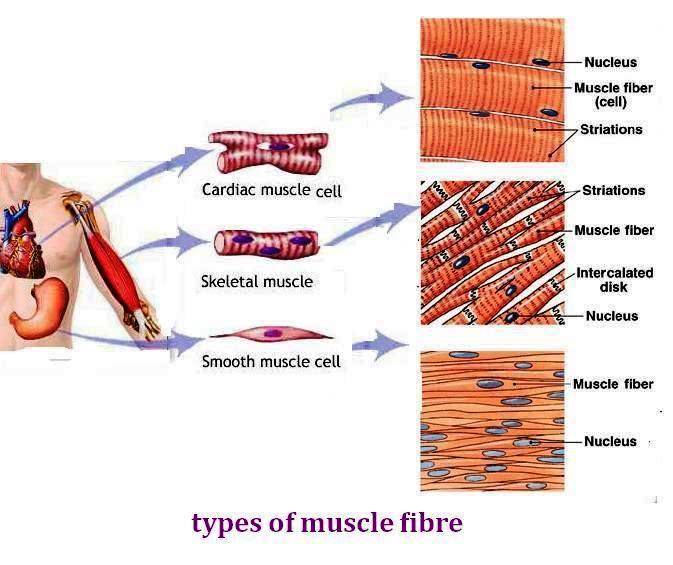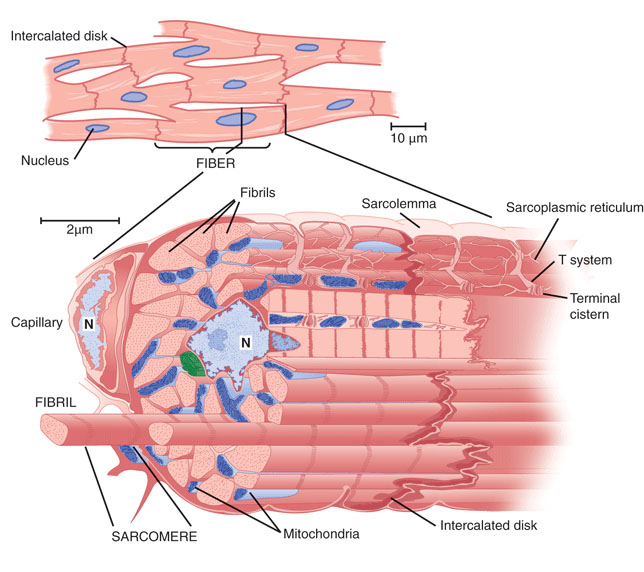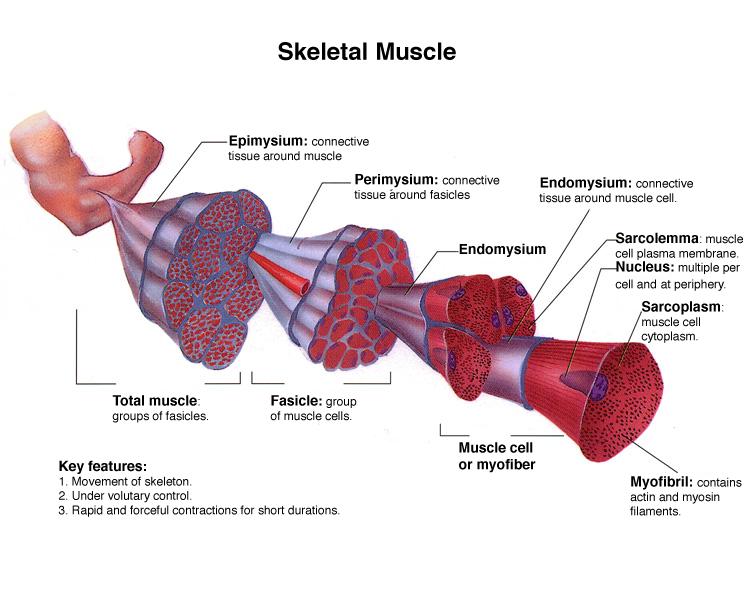Difference Between Cardio and Skeletal Muscles

Cardiac and skeletal muscles are both striated and contain an orderly arrangement of myofibrils and can be found in the body of vertebrates. These are probably the only similarities between the two. The basic difference between cardiac and skeletal muscles is that the former are involuntarily controlled, whereas the latter are managed by the somatic nervous system. Cardiac muscle tissues are only found in the heart, while skeletal muscles are present all over the body and connected to the bones with the help of structures called tendons.
Both these types of muscles typically differ in their shapes. The cells comprising cardiac muscles are arranged in semi-spindle shape fibres while skeletal muscles are cylindrical in shape, owing to the cylindrical arrangement of the cells. Moreover, cardiac muscles are shorter in size as compared to skeletal muscles and have a centrally sited nucleus, while skeletal muscles have multiple nuclei.
Cardiac muscle cells are branched and are connected via gap junctions, which allow the movement of ions and other small molecules from cell to cell. The skeletal muscles on the other hand, are tightly bound together.
There is only a single contraction, called syncytium, in skeletal muscles, while cardiac muscles contract and relax in respond to signals from the heart’s own neural conduction system. Cardiac muscles have dense endomysium and mitochondria membranes and have more blood vessels in the mitochondria as compared to skeletal muscles. Almost 25 percent of space in cardiac muscles is occupied by mitochondria while in skeletal muscles it is hardly two percent of the total muscle. Furthermore, skeletal muscles have more T-tubules as compared to cardiac muscles, though the tubules in the latter are a bit wider.
Instructions
-
1
Cardiac muscles
Cardiac muscles are one of the three major types of striated muscles and are found in the hearts of animals. These involuntary muscles are found in the walls and histological foundation of the heart, particularly in the myocardium. Like all other tissues in the body, cardiac muscle cells also need sufficient blood supply to provide oxygen and nutrients to the heart and take out waste products such as carbon dioxide. Unlike other tissues, these muscles are extremely resistant to fatigue.
Image courtesy: medicinexplained.blogspot.com
-
2
Skeletal muscles
Skeletal muscles are also a form of striated muscles and are voluntarily managed by the somatic nervous system. As the name suggests, the skeletal muscles are connected to the bones by structures called tendons. These muscles are a combination of individual components called muscles cells, tightly bound together.
Image courtesy: doschdesign.com






